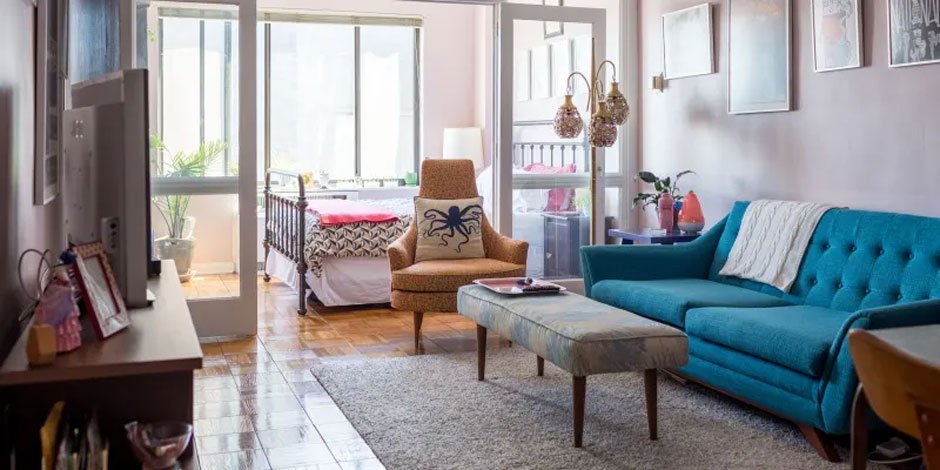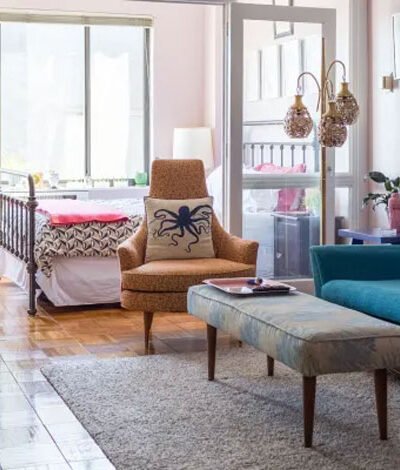 In a busy, overstimulated world, our homes should be the place where comfort meets calm. Yet even the most inviting spaces can quietly contribute to daily stress if they’re cluttered, noisy, or just not functioning well. The good news? Creating a more peaceful home doesn’t always require a complete renovation or a major budget. Sometimes, a few thoughtful fixes can go a long way, notes Limehouse Property Management Services.
In a busy, overstimulated world, our homes should be the place where comfort meets calm. Yet even the most inviting spaces can quietly contribute to daily stress if they’re cluttered, noisy, or just not functioning well. The good news? Creating a more peaceful home doesn’t always require a complete renovation or a major budget. Sometimes, a few thoughtful fixes can go a long way, notes Limehouse Property Management Services.
Here’s a calm-first checklist of practical home updates and improvements that make your space feel more supportive, soothing, and livable, no sledgehammer required.
Start with What You Can Shift
You don’t need a major remodel to make a meaningful change. Many of the most impactful home updates are simple tweaks that remove friction and add calm to your day. Let’s begin with the easy wins.
1. Soften the Soundscape
Excess noise, whether from neighbors, traffic, or even loud appliances, can wear down your nerves over time. Consider quick sound-dampening fixes:
- Add rugs to echo-prone rooms
- Install weather stripping on drafty windows and doors
- Use soft furnishings like curtains and fabric wall hangings to absorb sound
A quieter home can help reduce tension and promote more restful sleep, especially if you live in a busy area.
2. Fix the Flicker
Harsh, flickering, or overly bright lights are a subtle stressor. Swap out cold overhead lights for soft, warm bulbs in frequently used rooms. Add lamps with dimmers where possible, especially in spaces meant for winding down, like your bedroom or reading nook.
Don’t underestimate the mood-lifting power of good lighting.
3. Eliminate Friction Points
Do you trip over the same loose rug corner every morning? Fight with a sticky drawer in the kitchen? These minor, daily annoyances accumulate mental noise. Take an hour to walk through your home and note anything that makes your day harder than it needs to be.
Fixing a squeaky hinge or replacing a faulty light switch won’t just improve function; it also subtly reinforces the idea that your home is on your side.
4. Streamline Entryways
Your home’s entrance sets the tone. If you walk in and see a mess, shoes everywhere, coats piled up, junk mail, it immediately signals chaos. Create a more calming entry by:
- Installing hooks or cubbies for coats and bags
- Adding a closed bin or drawer for paper clutter
- Using a small bench to invite pause and organization
This quick refresh can have a significant impact on your daily mindset.
5. Make Comfort Visual
Studies show that what we see in our environment directly affects our stress levels. Look for visual clutter: tangled cords, overstuffed surfaces, mismatched storage bins. These subtle cues can make your space feel out of sync.
Swap plastic containers for fabric bins, group items by color or category, and tuck away what you don’t need out. A cleaner look often means a calmer mind.
6. Prioritize Personal Comfort Zones
Even in a shared space, carving out a small nook just for you can be transformative. It might be a chair by the window for morning coffee or a cleared-off corner for yoga and deep breaths.
What matters is that it feels intentional and comforting. It doesn’t have to be fancy, it just has to be yours.
7. Acknowledge What You Can’t Fix with Paint or Plugs
Sometimes the most significant stressors aren’t the loose towel bar or flickering lamp. Life at home intersects with emotional and mental wellness in ways we don’t always see. If you’re feeling overwhelmed, it’s worth checking what kinds of support are already available to you, including your insurance wellness benefits.
Understanding what’s covered can be a helpful first step toward finding resources for mental health support, therapy, or other wellness services.
8. Let Nature In
Indoor plants aren’t just décor, they’re good for your nervous system. If your space allows, add a few low-maintenance greens like pothos, snake plants, or peace lilies. Let in fresh air when possible, and open the blinds during the day to take advantage of natural light.
Nature cues help your body regulate stress and sleep more easily.
9. Use Scent to Set the Mood
Memory and emotion are deeply connected to our sense of smell. A soothing scent can instantly shift the atmosphere in a room, from energizing citrus in the kitchen to calming lavender in the bedroom. Try essential oil diffusers, soy candles, or even simmer pots with herbs and spices to set the mood.
Choose one signature scent per space to create a sense of intention and calm.
10. Keep the Fixes Rolling
You don’t have to do it all at once. In fact, you shouldn’t. Start with one thing that’s been bugging you, maybe it’s the pile of unsorted mail, or the squeaky bathroom fan. Each improvement makes a small deposit in your home’s calm bank.
Over time, you’ll feel the difference.
A more comfortable home isn’t just about aesthetics; it’s about how your space makes you feel every day. With each thoughtful fix, you’re not just improving your surroundings; you’re giving yourself the permission to rest, recharge, and breathe a little easier.
Your home doesn’t have to be a perfect sanctuary. But with a few calm-first fixes, it can better support your wellbeing, inside and out. Whether it’s soft light, quieter floors, or simply knowing where to hang your bag when you get home, these little comforts add up and help you feel more at home in your home.





Leave a Reply